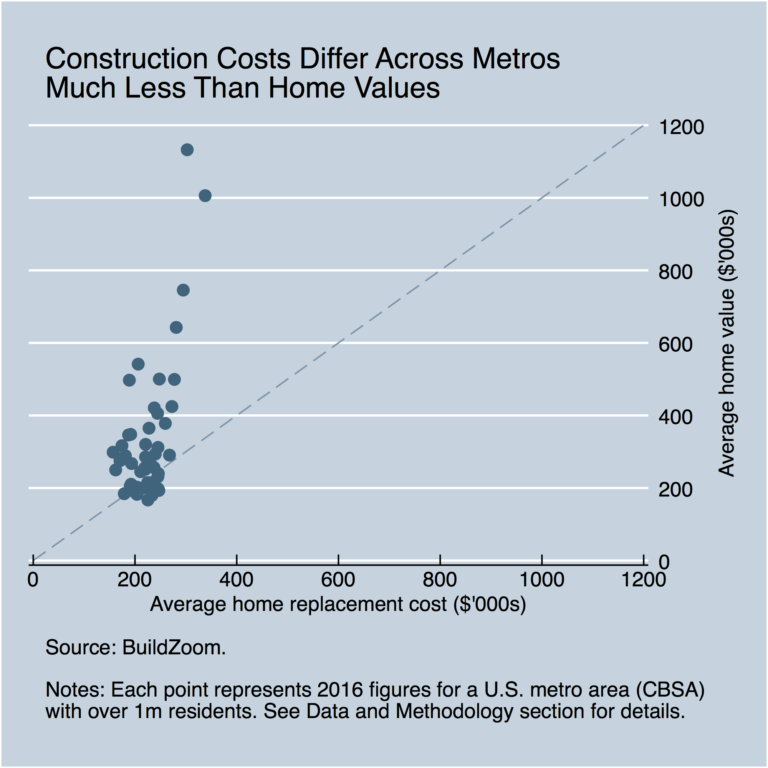What City Observatory did this week
1. Now we are 3. This week marks City Observatory’s third birthday. It’s been an exciting time to be engaged with cities. We take a few minutes to review what we’ve done over the past year, and set some goals for what we want to achieve in the next twelve months. Thanks, all, for following City Observatory!
2. Why is affordable housing so unaffordable? This week, a non-profit developer has broken ground on 82 badly needed new affordable apartments for low income families in Emeryville, across the bay from San Francisco. The bad news? The cost of building these apartments averages nearly $700,000. At that price, its inconceivable that even region as wealthy as San Francisco can find the resources to build enough low and moderate housing to make a dent in its affordability problem. Seriously addressing affordability will require figuring out ways to lower costs and increase housing supply.

Must read
1. Gentrification and personal battles between artists in Boyle Heights. The predominantly Latino neighborhood of Boyle Heights in Los Angeles has been the visible epicenter of controversy over gentrification. Several stories have focused on the vandalism of art galleries, which are allegedly fueling displacement in the neighborhood. A new story from the Guardian—”Are white hipsters hijacking Anti-Gentrification in Boyle Heights”—reports on some of the deeply personal battles between artists in the community. According to the Guardian, Several prominent protesters have or had personal ties to targeted gallery owners and artists. Gallery sources also provided evidence that some individuals who sought their patronage later turned against them on social media. There’s no question that Boyle Heights is experiencing significant changes, but the Guardian makes it apparent that what’s happening their has been drawn into the spotlight by deeply charged personal animosities between groups of artists who question each others actions.
2. Diverging opportunities in big cities and small cities. The Brookings Institution’s Mark Muro and Jacob Whiton take a look at the growing gap between the nation’s larger cities and its smaller ones. Whether measured by income, job growth, or productivity, larger cities are increasingly pulling away from smaller ones. If it’s not a “winner take all” economy, it is as they say increasingly a “winner take most” economy. Some of this is due to largely inexorable forces of agglomeration–firms and workers are more innovative and productive when they’re together in larger, denser cities. But the negative effects on those in smaller and more rural places are amplified because of what Muro and Whiton call “threadbare” programs to cushion dislocation and help with adjustment.
3. Widening highways doesn’t reduce congestion. Writing in the Houston Chronicle, Allyn West reviews the latest plans from the Texas Department of Transportation to dump another several billion dollars into widening highways in the Houston area. Even TxDOT, it seems, has gotten the memo about the futility of trying to pave your way out of congestion. Their sales pitch for the expanded roadways is all about lowering expectations: they’re not claiming to solve or reduce congestion, but rather to “manage it.” Like urban highway builders everywhere, they’re fighting a losing battle against the fundamental law of road congestion: adding unpriced road capacity simply stimulates more driving, and ultimately produces more traffic, longer delays and greater sprawl.
New Knowledge
Paying for Dirt. Roughly speaking, the cost of building new housing can be divided into two parts: the cost of building a structure (foundation, walls, roof, plumbing, wire, plaster, paint and fixtures, plus the labor to put it all in place) and the cost of the land that the building occupies. BuildZoom’s Issi Romem has painstakingly constructed estimates of how much these two different components cost in different metro areas around the country. Bottom line: the big differences among cities have little to do with differences in construction costs, and almost everything to do with land costs. The cost of construction among major metro areas varies via a factor of about two while the cost of land varies by a factor of about seven. This suggests that solving our affordable housing problem has much less to do with reducing the price of construction, and a lot more to do with reducing the price of land. The biggest factor is local land use laws which essentially mandate that each housing unit be bundled with a certain minimum amount of very scarce and expensive land. Paying for Dirt is a terrific resource, with detailed metro level estimates of the replacement cost of housing, and its relationship to local land prices. There’s even local detail showing the variations within metro areas; it turns out that even in “affordable” metro areas, the price of housing in urban centers tends to greatly exceed replacement costs, again suggesting that density constraints are limiting housing choice.
In the News
In an article entitled, “Much ado about downtown vacancies,” Downtown Los Angeles News quoted City Observatory’s Joe Cortright’s analysis how filtering in housing markets gradually transforms housing once built for the “luxury” end of the market into more affordable offerings.
CityLab’s examination of the subsidies being dangled to land Amazon’s HQ2 project, quotes Joe Cortright’s observation that it’s likely that the company has already narrowed its list of likely candidates to just a handful, and is chiefly using the very public beauty contest to improve its negotiating position.


